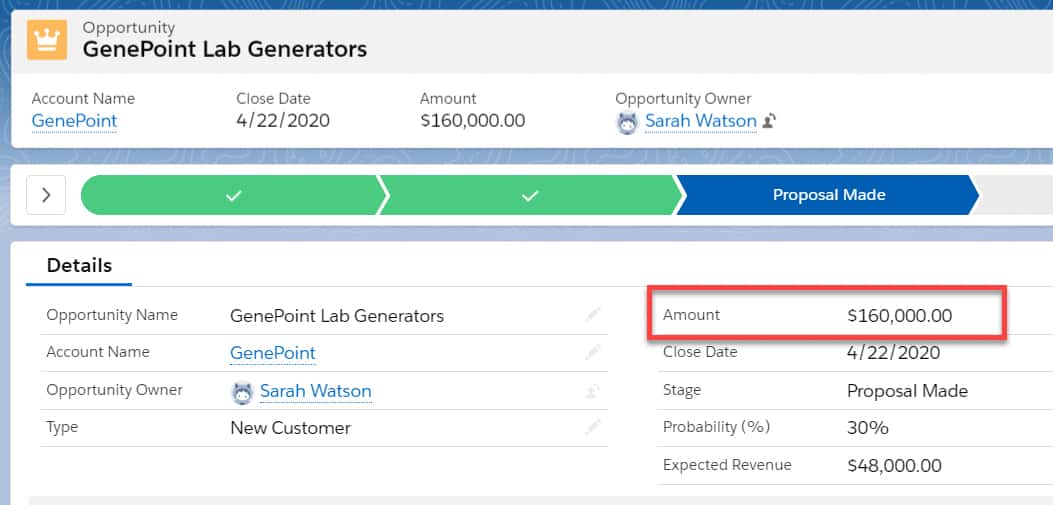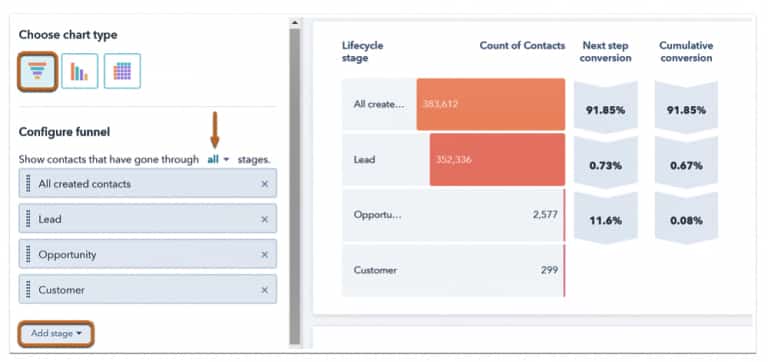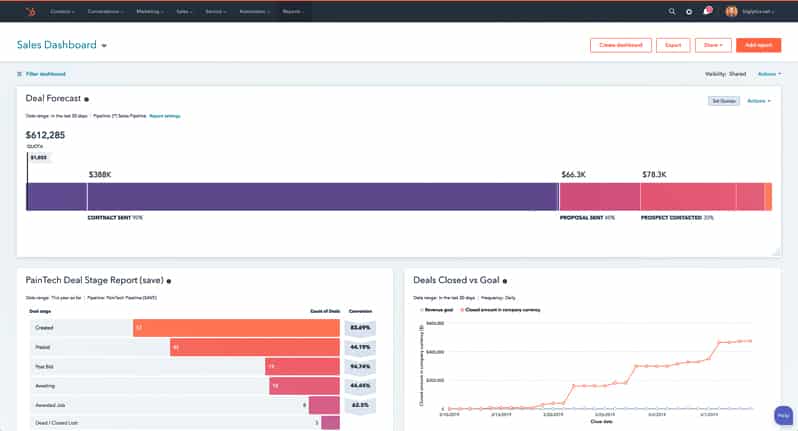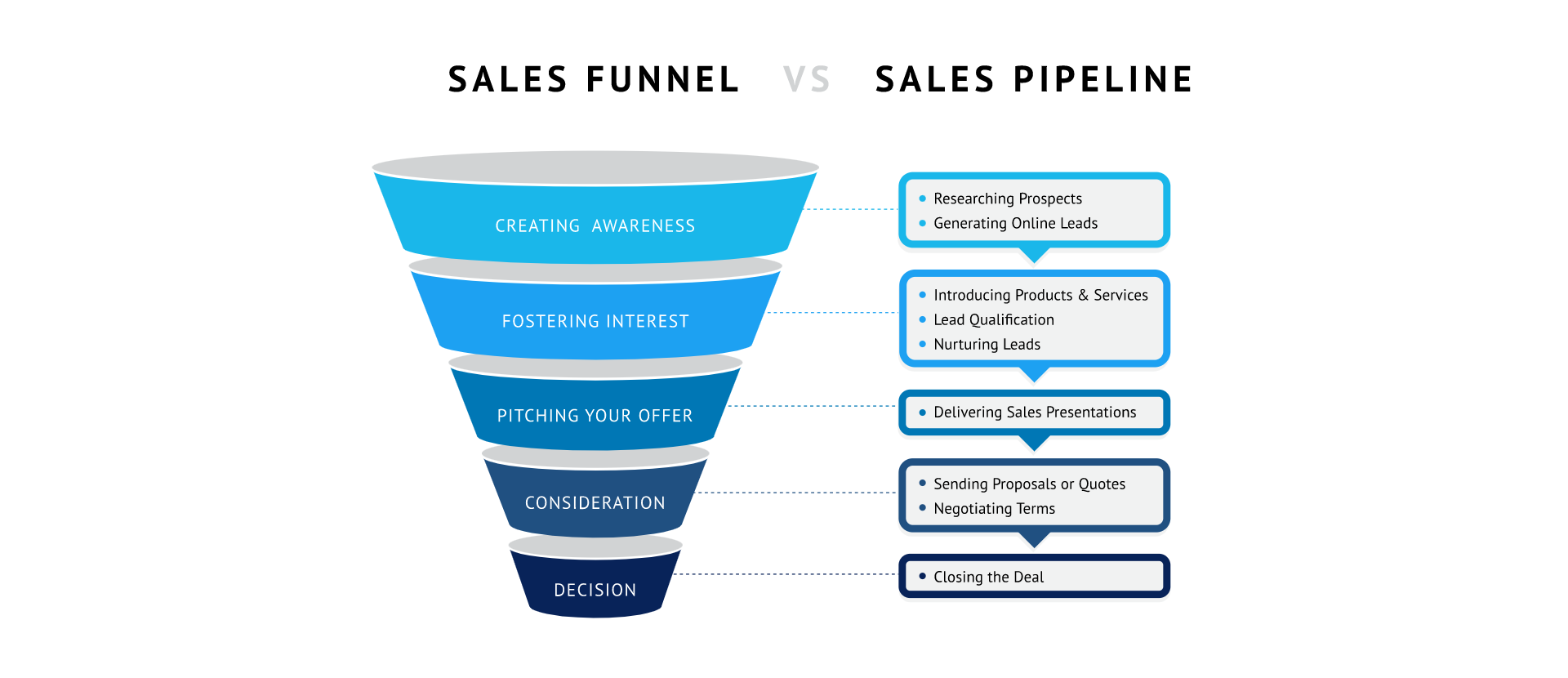What is a Sales Funnel?
A sales funnel basically covers a customer’s journey from the point where they first came to know about your business till the point they make a purchase. When we talk about the shape of the funnel, the wide top of the funnel is the part where you start adding leads & as you go down, the funnel get narrower & the number of leads decrease from stage to stage until only the small percentage that converts to customers reach the bottom.
There are a total of five stages in a sales funnel that are:
1. Creating Awareness
So, you start by creating awareness & sending out your message to your potential clients. Your leads first become aware of what your brand is & what your business has to offer. Different marketing approaches, like advertising, e-mails, sms & special offers, are mainly used to start a customer journey.
2. Fostering Interest
Next, you need to encourage them to learn more about your company, product, service, or pricing. Once that is done, you need to continuously follow up with the lead, via phone or email, & ask relevant questions about their needs to nurture your lead. You can also offer a free trial or demo to build their trust before discussing the pricing plans.
3. Pitching Your Offer
Your lead is finally interested in receiving information to evaluate for potential purchase & this is the stage where you can start a sales pitch which could be in the form of a product demonstration or a formal business proposal, if you receive a request for proposal (RFP). This can also be done in a very casual manner (depending on your client) by simply communicating the pricing & scope of services over phone call or by sending out an email.
This is a very short-term stage as right after you make an offer, the prospect either rejects it & exits the funnel or moves to the next stage.
4. Consideration
The lead moves to the consideration stage right after you’ve pitched an offer. Even if you’ve made it this far, lead nurturing is consistently required by following up on your proposed offer as there are chances that your lead may have additional questions about the offer presented.
For example, you’re sending a proposal or a contract to a potential client. You may need to place phone calls or send emails to remind them to sign & return the form to finalize the sale.
5. Decision
Everything comes down to the “Decision” stage in which the lead makes a decision either to purchase from your business & become your customer or look for other services or products offered by other businesses.
Do not get disheartened, if the deal is lost. Instead, try again later when they’ll be back in your funnel at some stage, depending on how your sales process is structured.
On the brighter side, if the lead decides to make a purchase, the next step is finalizing the transaction, which may also involve a customer onboarding process. There could be additional stages for your business after a sale is completed for cross-selling, customer loyalty & retention, re-purchasing, upselling now or selling upgrades in the future, or some other form of recurring purchases.
How to Use Your Sales Funnel
Tracking sales information is what a sales funnel is all about. As discussed earlier, it reflects a customer’s journey & divides it into different stages which makes it a lot easier for you assign each lead into the appropriate stage & then move them to next stages accordingly.
A sales funnel shows how effective your sales tactics are at each stage & identifies areas of improvements. You can also check if you are meeting your sales goals or not by calculating the conversion rates of a lead from stage to stage.
Customer relationship management (CRM) software is an excellent tool for monitoring your sales funnel since CRMs organize contacts & sales opportunities. The records of each lead (or opportunity) can be viewed & edited to show accurate contact information, deal value & stage in the sales process, which can then be aggregated & converted into a funnel-style visual.
Salesforce, for instance, has individual records for opportunities that indicate where they are in the stage of the sales pipeline and their potential value. That information can be combined with other opportunities in the sales funnel to be converted and presented in a funnel chart.

You can also check the conversion rates of each stage by using CRMs. Not only can this help with sales forecasting, but it also enables you to evaluate where bottlenecks are in the sales process to make adjustments & get leads through the funnel faster.
HubSpot does this by taking aggregated data about each lead or opportunity stage & translating it as a conversion percentage.

Benefits of a Using a Sales Funnel
So, now you know what a sales funnel is, what are the stages & how do can you use it.
Now, let’s discuss the benefits of using a sales funnel for your own business. Some of these benefits include giving you visually organized sales information, improved sales forecasting capabilities, insights for improving overall sales performance & a reliable way to track sales goal progress.
Listed below are the top benefits of using a sales funnel:
Visualizing the Sales Process
When tracking a lead, a sales funnel is the best approach to visualize your sales process. You can find out how many leads go from one stage to the next, how long a lead stays in each stage & how many or what kind of sales pipeline activities are most likely to move them along. This is done by doing analysis of current leads, prospects & customers that are currently going through the sales process.
Improved Sales Forecasts
Earlier we discussed that you can calculate your conversion rate at each stage by using CRMs. This information can also be used to predict your future revenue & calculate the percentages of leads you expect to close & multiply it by the total estimated deal value in the funnel, giving you a sales forecast.
The formula for calculating a sales forecast is based on the number of prospects in the consideration stage, the deal closing probability of each prospect & the estimated deal value of each opportunity. This gives you an estimate for how much sales revenue you expect to generate in a given time period.
The formula is as follows:
Sales Forecast = (% Likelihood of Prospect A Purchasing x Estimated $ Deal Size) + (% Likelihood of Prospect B Purchasing x Estimated $ Deal Size) + (% Likelihood of Prospect C Purchasing x Estimated $ Deal Size)
A sales funnel example that includes forecasting capabilities is seen in HubSpot CRM.

Improved Sales Performance
Since, a sales funnel can give you insights on what is working best for your business & what is not, you can easily identify the areas of improvement & start working on those to increase your sales performance.
Also, you can use funnel information to allocate additional resources needed to maximize conversion rates at each funnel stage. This might include anything from technology that improves the speed of a workflow, such as sales automation software, to financial support in the form of additional funding for a project or advertising. It may also involve human resources, such as hiring additional employees to help with sales tasks.
Managing Sales Goals
As you get information at every stage of the funnel, it get a lot easier to monitor & track team & individual sales goals.
You can also use sales funnels to determine how many leads are needed in each stage to hit your sales goals. For example, let’s say your goal is to close four deals every week & you know the funnel conversion rates are as follows:
- 25% of leads aware of your business are interested in learning more
- 40% of your interested leads want to receive an offer
- 80% of your leads offered need further consideration
- 50% of your leads in the consideration stage agree to purchase
This means to hit your goal of four deals closed, you’ll need to create awareness for at least 100 leads, of which 25 will be interested in learning more. Of those 25, 10 will accept an offer & eight will need further consideration. Then, four of those eight considering leads will agree to purchase.
Conclusion
A sales funnel is a visualization used to manage the sales process by viewing each stage of the funnel as it relates to the customer journey. Your company can use sales funnels to assist in forecasting sales, making adjustments to improve performance & setting & managing sales goals. Plus, sales CRMs leverage technology to help you track sales information, & make it easier to compile data & produce a sales funnel.




